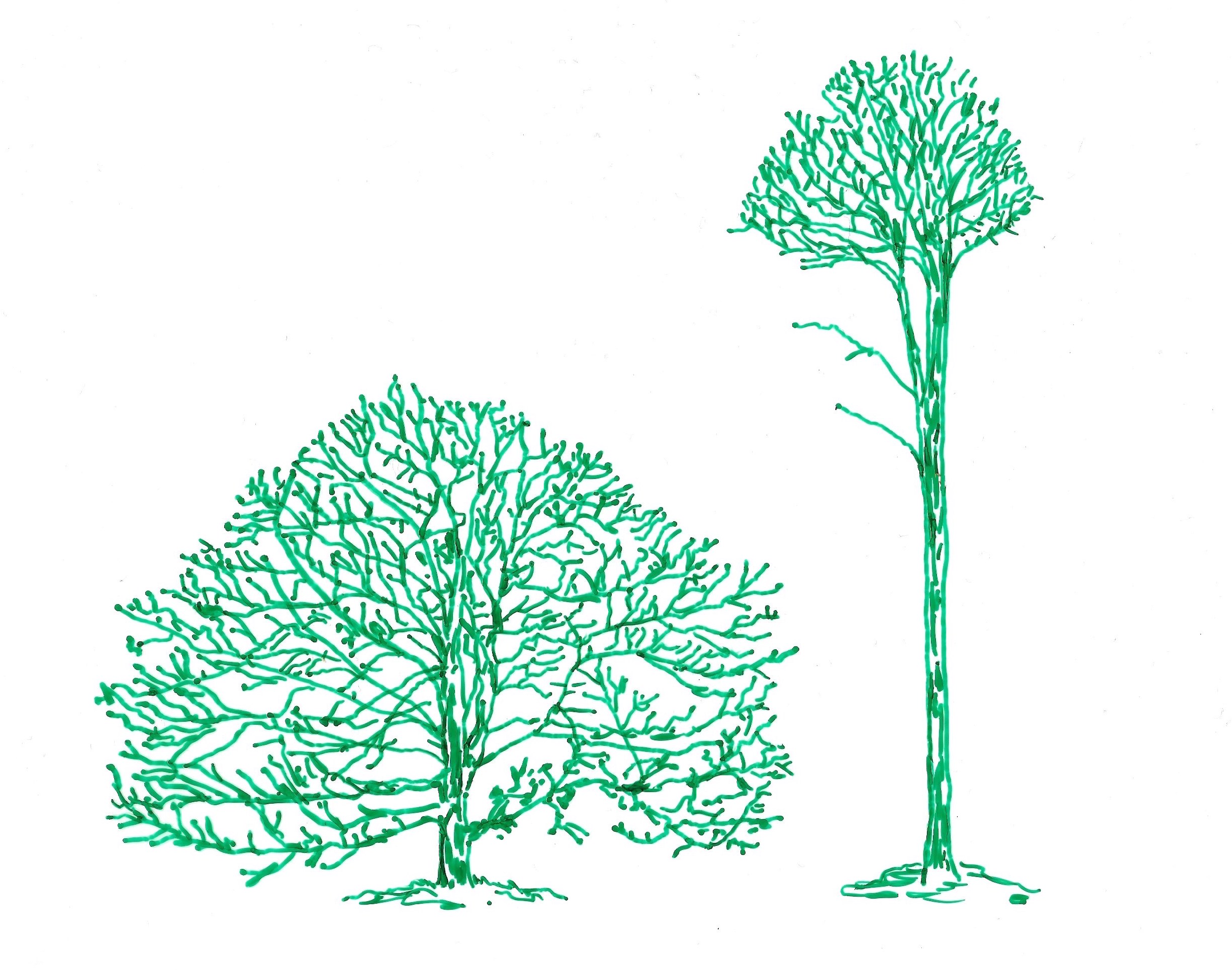Trunkism
November 10, 2020
The growth of a tree trunk demands considerable investment and focus of resources. The competition for sunlight can lead to very differently formed trunks within the same species of tree.
A comparison of two white oaks tells the story. The broad-crowned shorter oak grew as a free-standing tree at the edge of a pasture. As a young tree it had no neighbouring trees growing close by. As is typical for a relatively solitary tree, the crown gradually spread out broadly in all directions, attaining a relatively spherical shape. Branches grew outward and ramified into the space of greater brightness surrounding them. The crown as a whole didn’t just grow towards the sun but towards the brightness of the surrounding atmosphere.
In contrast the small-crowned white oak developed a long, upward-soaring trunk as it grew up in the woods surrounded on all sides by trees of similar height, producing shade for each other. As a result of this competition for light the dominant growth direction is upward into the light-filled space above. The lower branches, which never grew to great size, died off in the increasingly shady environment of the upward-shooting trees.